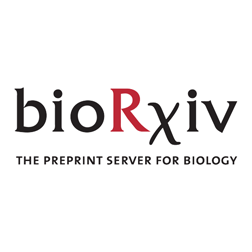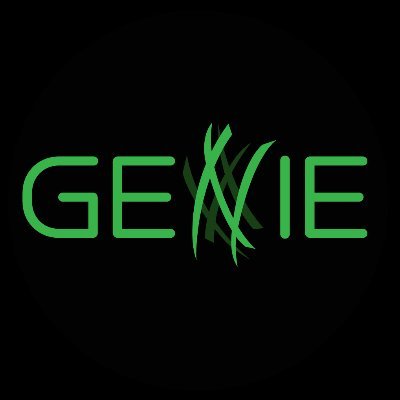
Ilya Kolb
@i__kolb
Followers
314
Following
277
Media
21
Statuses
127
• neuroscience • robots • inventions • @patcherBot • @GeorgiaTech PhD; @HHMIJanelia; @ArcadiaScience
Bay Area, CA
Joined April 2018
All hardware designs, software, and documentation are open-source and available on GitHub. We'd love your feedback on what features would make AutoOpenRaman more useful for your research! [8/8]
0
0
1
This resource is perfect for scientists who want to try Raman spectroscopy without committing to expensive commercial systems, or current OpenRAMAN users who want to add automation to their experiments. [7/8]
1
0
1
We demonstrated AutoOpenRaman by automatically collecting 200 Raman spectra from Chlamydomonas reinhardtii colonies in 68 minutes across a 96-well plate format. The system successfully detected β-carotene signatures in the algae. [6/8]
1
0
1
The software is designed for non-programmers to install and use, built on µManager ( https://t.co/W8mX7bOnwv) for broad device support. Users can swap hardware components as long as µManager supports them - no code changes needed! [5/8]
1
0
1
On the hardware side, we added a motorized XY stage, microscope objective, laser shutter and neon light source for quick calibration. [4/8]
1
0
1
Our solution: AutoOpenRaman adds automation to OpenRAMAN while keeping it open-source and relatively inexpensive (~$8k in total). [3/8]
1
2
3
The problem: Commercial Raman systems offer automation but cost $200k+. OpenRAMAN ( https://t.co/R2JTWrEtoU) is a powerful, inexpensive DIY alternative, but it doesn't support automation. [2/8]
1
0
1
Introducing AutoOpenRaman, an automated, inexpensive microscope for Raman spectroscopy! 🧵 We recapitulated many features of expensive commercial systems using economical hardware and open-source software. @ArcadiaScience
https://t.co/5w2y0VULBP [1/8]
research.arcadiascience.com
We developed AutoOpenRaman, an automated, inexpensive microscope for Raman spectroscopy. We recapitulated many features of expensive commercial Raman spectroscopy systems using economical hardware...
1
5
8
Congratulations to @janeliagenie, @LoogerL and everyone involved! Huge thank you to all the collaborators that made this possible! 📰 Preprint:
biorxiv.org
Monitoring GABAergic inhibition in the nervous system has been enabled by development of an intensiometric molecular sensor that directly detects GABA. However the first generation iGABASnFR exhibits...
0
3
17
iGABASnFR2n could be used to verify results obtained with the positive-going sensor and decrease the chances of erroneous conclusions being drawn due to imaging artifacts or analysis techniques.
1
0
1
Surprisingly, we also found several mutations that reversed the response of the sensor, making it decrease its fluorescence in response to binding GABA. The best negative-going sensor was named iGABASnFR2n.
1
0
1
At the end of the day, we found iGABASnFR2 which was 4x more sensitive than its predecessor, expressed better in neurons, and had slightly faster kinetics!
1
0
1
We started with iGABASnFR, created by Jonny Marvin and @LoogerL at @HHMIJanelia and made >4,000 variants of the sensor, hoping to improve its sensitivity, kinetics, and expression.
1
2
5
🚨 New preprint! We developed iGABASnFR2, a fluorescent sensor for GABA, that can be used to monitor inhibitory activity in tissue culture, brain slices, and in vivo!
Improved genetically-encoded GABA indicators are now published. iGABASnFR2 has 4.2X better sensitivity and 20% faster kinetics; detects direction selective GABA release in retina 📰Preprint: https://t.co/692D9a364w 🧪Plasmids & AAVs: https://t.co/VtDbB6qzIJ
@Addgene @HHMIJanelia
4
2
10
Introducing our new pub, “DIY Raman spectroscopy for biological research”! We optimized an open‑source Raman system for solid & liquid bio samples. https://t.co/tYcKVFjo6e
@ArcadiaScience 🧵1/9
1
13
27
My new work with @LoogerL at @ucsdneurodept and @HHMINEWS is now live! We made biosensors for polyamines, molecules involved in cancer, neurdegenerative diseases, and aging (and more). Great collab with @JMo_10613, @PeterVangheluwe and others!
1
2
29
Be at the forefront of discovery and innovation. Join the GENIE Project Team at HHMI Janelia as a #ResearchTechnician. You’ll be optimizing our imaging-based screens for #GeneticallyEncodedSensors for neuroscience and 4D cellular physiology: https://t.co/CSG0QJrFj6
#ScienceJobs
0
5
5
This design is inspired by the amazing screening microscope that is still in operation at @janeliagenie! That system has been used to screen tens of thousands of FP variants. And big thank you to @LoogerL and the entire lab for supporting this work! 🧵5/5
0
1
4
The assembly instructions, design files for the drive itself and the electronics are all available here, as is the BOM for all the off-the-shelf components! https://t.co/jYPv2MXbsX 🧵4/5
1
0
2
You can raise and lower the drive using digital signals from a microcontroller (like an Arduino) or a DAQ, which makes it easy to integrate with other hardware. 🧵3/5
1
0
0




